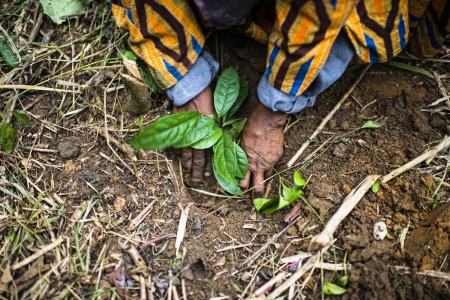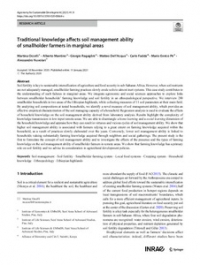a doubling or even tripling of crop productivity in many cases. However, at the same time a great number of reports have transpired about failures to achieve a profitable increase in crop yields when using the recommended fertilizer rates, here referred to as ‘non-responsiveness’. In principle, the efficiency of fertilizer inputs can be curtailed by adverse physical, chemical and/or biological conditions of soils that are inherent to their mineralogy and/or induced by management. The presented study investigated the frequency of non-responsiveness, the underlying biogeochemical causes, and management scenarios to increase fertilizer efficiency in maize and soybean cropping across different smallholder farming landscapes and growing seasons in DRCongo, Kenya, Tanzania and Nigeria. Several series of on-farm trials are carried out to assess crop productivity under different management scenarios. Along this strategic laboratory and field kit analysis are made of soil texture, mineralogy, extractable nutrients, P sorption, exchangeable Al, CEC, fungal-bacterial community composition, root mycorrhizal colonization and plant nutrient deficiencies to understand the relative contribution of soil physical, chemical and biological soil functions to non-responsiveness. To target greater crop productivity and fertilizer efficiency different alternative ISFM management scenarios are tested that include combinations of agricultural lime, secondary and tertiary nutrients, composted manure and deep tillage. Throughout the study close interactions are made with participating farmers for evaluating management histories and disseminating good agronomic practices. In the end the ambition of this project is to deliver soil-specific frameworks for assessing the causes of non-responsiveness that feeds into decision support for improved management scenarios to increase fertilizer use efficiency of maize and soybean crops in smallholder farms.
menu










